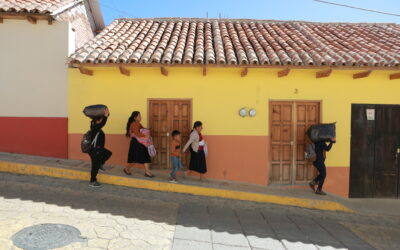MILDRED ROBBINS LEET, TRICKLE UP CO-FOUNDER
In 1979, my husband, Glenn and I developed a process to reach the poorest of the poor. To help people move themselves out of poverty by starting businesses of their own.
What we did was provide them with a business plan and startup capital. When we first started Trickle Up, women and men came forth with different ideas for businesses; repairing shoes, growing rice, baking bread.
We gave the first grant to this wonderful woman in Dominica in the Caribbean. And she said ‘for my ideas? You trust me?’ That does an enormous amount to a person’s self-esteem. People in poverty do have skills and if you give them an opportunity they’ll reach out and grab it and run with it. And they learn how to build up their own capital and become self-reliant.
We find almost 70% of the businesses are started and carried out by women. What’s been so extraordinary is the growth of it. To all of us that have been involved in Trickle Up, it has been very satisfying to see the change that occurs in villages, seeing people’s homes improve, to see more and more children go to school, and girls go to school.
Trickle Up is working, your input will make a difference in people’s lives and it is exciting to know that you’re bringing out the best in people. Which to my mind gives us hope for the future of our world.”


